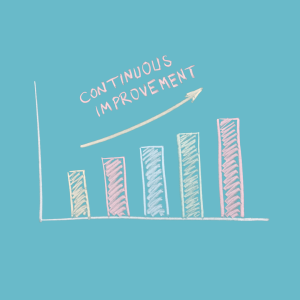Most small and solo businesses look at how many people liked or shared their post on an individual basis. However we recommend that you look at the data over time. If we don’t analyse things -we don’t know what is working and what isn’t. Most small business owners groan at the thought of analysing their social media however here’s a little secret: analysing your posts doesn’t have to be overwhelming and you get more information looking at your data after 3/6/12 months for example. In fact, it’s essential for small and solo businesses to make the most out of every post. Here are some strategic tips to help you analyse, revamp, and engage more effectively with your audience.
Analyse Social Media Data: Why it Matters.
When you regularly evaluate your social media performance, you’re not just playing a numbers game. This practice gives you valuable insights that can significantly impact your business. Here’s why:
Analyse to understand Your Audience.
Knowing who engages with your content allows you to tailor your posts to better meet their needs and interests. By tracking metrics such as likes, comments, shares, and reach, you can identify the type of content that resonates most with your audience. This understanding helps you create more targeted and impactful posts going forward.

Improving Your Content Strategy.
Not all posts are created equal. Some will soar, others might flop. By examining which posts get the most engagement, you can spot patterns. Perhaps your audience loves behind-the-scenes glimpses or responds well to educational content. Use this data to fine-tune your strategy and focus on what works, while phasing out what doesn’t.
Analyse to Maximise Your ROI.
For small businesses, every dollar counts. Analysing your social media data helps you direct your resources where they’ll have the biggest impact. If certain types of posts or platforms drive more traffic and conversions, you can focus your efforts there. This way, you’ll get the most return on investment for both your time and budget.

Strengthening Customer Relationships
Your engagement metrics aren’t just numbers; they’re real feedback from your customers. By analysing comments and direct messages, you can identify common questions or concerns. This allows you to adjust your offering based on actual customer input, leading to stronger relationships and a more loyal following.
How to Analyse Your Social Media Data.
Now that we’ve covered why it’s important, let’s dive into how to actually analyse your data effectively. Here are some key areas to focus on:
1. Demographics
Who’s following you? Check out the age, gender, location, and interests of your audience. Knowing this can help you create content that speaks directly to them.
2. Engagement Metrics
Look at the likes, shares, comments, and overall engagement rates. Which posts are performing well, and more importantly, why? Analysing this will give you a clear picture of what’s working.
3. Optimal Posting Times
When is your audience most active? Posting at the right time can make all the difference in visibility. Use your insights to optimise your schedule for when your followers are most likely to engage.
4. Analyse Content Types
Do your followers prefer videos, images, or written posts? Analyse which formats get the most interaction and diversify your content based on those insights.
5. Competitor Analysis
Take a look at how businesses similar to yours are performing on social media. What strategies are they using, and how can you adapt those for your own audience? Competitor analysis is an often-overlooked but powerful tool.
Revamping Underperforming Content.
Not all content will hit the mark—and that’s okay! Instead of discarding underperforming posts, use the data to improve them. Here’s how:
Refine the Message
Did your message fall flat? Maybe a stronger hook or more compelling CTA (Call to Action) could turn things around. Small tweaks can lead to significant results.
Revamp Visuals
Eye-catching visuals are crucial for standing out. Try adding infographics, videos, or more vibrant images to breathe new life into underperforming content.
Use Social Proof
Got great customer testimonials or reviews? Don’t be shy—share them! Social proof can help boost credibility and increase engagement.

Experiment with Format
If a blog post didn’t perform well, consider turning it into a podcast or a video. Different formats appeal to different audiences, and experimenting can lead to better results.
Consistency is Key.
Consistency is the secret sauce to social media success. Keep your posting schedule regular and engaging to maintain visibility and keep your audience interested. Regular analysis will help you refine your strategy over time.
Testing and Tweaking.
The digital landscape is constantly changing, so always be open to experimentation. Test different types of content, posting times, and engagement tactics. Here’s a quick checklist for continuous improvement:
- Which posts received the most likes and shares?
- When did your audience engage the most?
- Are certain topics resonating more than others?
By reviewing your data regularly and adapting your strategy accordingly, you’ll be able to keep your social media content fresh and effective.

Setting Clear Goals
Before you dive into creating more content, set some measurable goals. Whether it’s increasing your follower count a certain percentage or boosting engagement, having clear targets will help you focus your efforts.
Stay Up to Date with Trends
Social media trends move fast. Stay informed about new features and tools to ensure your strategy remains relevant. This will allow you to jump on opportunities as they arise. However don’t jump on a trend for the sake of it make sure everything aligns with your brand. Authenticity wins over trends for trends sake.
Final Thoughts
Analysing social media data isn’t just a good habit—it’s a must for any small or solo business wanting to grow. By understanding your audience, refining your content strategy, maximising your ROI, and staying consistent, you’ll be well on your way to building a strong online presence. Just remember, flexibility and responsiveness are key!

Pingback: Nobody Cares About How Pretty Your Instagram Grid Is (Except You) - rawmarrowblog
Pingback: Authentic Instagram Growth -Don’t Worry about Followers. You Need to Care. - rawmarrowblog
Pingback: It’s not the Social Media Platform- it’s You! - rawmarrowblog
Comments are closed.